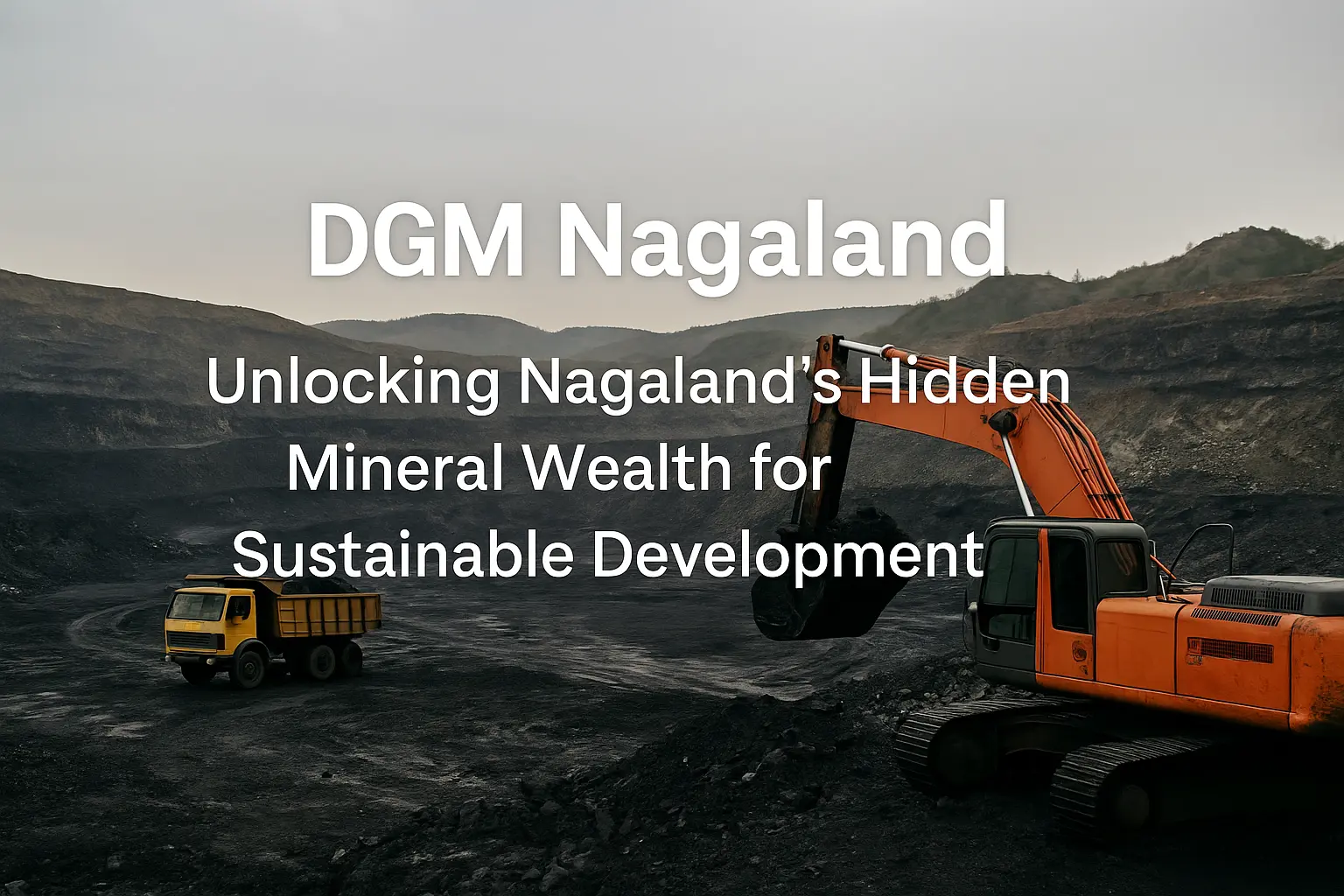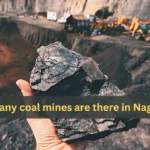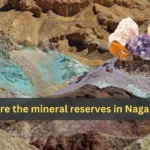Nagaland, nestled in the far northeast of India, is a land of vibrant tribal culture, dramatic landscapes, and – quite notably – untapped mineral potential. Beneath its dense forests and mountainous terrain lies a wealth of valuable resources including coal, limestone, petroleum, copper, and precious stones. At the forefront of managing this natural bounty is the Department of Geology and Mining, better known as DGM Nagaland.
In this article, we’ll explore the critical role played by DGM Nagaland, the opportunities presented by the state’s mineral reserves, the ongoing challenges in mining operations, and the roadmap toward a sustainable and prosperous future.
What is DGM Nagaland and Why Does It Matter?
DGM Nagaland (Department of Geology and Mining) is a government body dedicated to exploring, regulating, and promoting the mineral wealth of Nagaland. Established in 1963, the department operates under the guidance of the Directorate General of Mines Safety (DGMS) and aligns its practices with national policies and sustainable development goals.
The department’s mission is twofold:
- To manage Nagaland’s natural resources responsibly.
- To harness these resources for economic growth, job creation, and infrastructure development.
By issuing permits, overseeing operations, and ensuring environmental compliance, DGM Nagaland is the key driver of a structured and lawful mining ecosystem in the state.
A Glimpse Into Nagaland’s Mineral Treasures
Nagaland is rich in mineral diversity. Some of the most significant resources identified and surveyed by DGM Nagaland include:
- Coal: Found mainly in Mokokchung, Wokha, and Tuensang districts, Nagaland’s coal is suitable for thermal power generation and industrial usage.
- Limestone: Abundant in the Phek and Dimapur districts, limestone is used for cement manufacturing and construction.
- Petroleum and Natural Gas: Oil exploration initiatives are underway, particularly in the foothill regions.
- Nickel and Copper: Traceable in the hilly terrains, these metals offer industrial potential.
- Chromite, Manganese & Precious Stones: Occasional findings make these minerals valuable for commercial and research purposes.
The DGM Nagaland database continues to grow with extensive fieldwork, surveys, and modern geological studies using GIS mapping and drone technology.
Core Functions of DGM Nagaland
The department is not just a mining authority; it’s a full-fledged administrative and technical support system with clear objectives. Here’s what DGM Nagaland does:
1. Geological Survey and Exploration
Through a team of trained geologists, the department undertakes:
- Mineral mapping
- Prospecting surveys
- Resource estimation
This foundational data enables long-term planning and investment readiness.
2. Granting Mining Leases and Permits
DGM issues:
- Reconnaissance Permits (RP)
- Prospecting Licenses (PL)
- Mining Leases (ML)
These allow public and private enterprises to legally explore and extract minerals under monitored conditions.
3. Environmental Monitoring and Compliance
Mining, if unchecked, can be ecologically devastating. DGM ensures that:
- Mining companies obtain environmental clearance
- Operations follow waste management rules
- Eco-sensitive zones are protected
4. Revenue Collection and Regulation
Mining royalties, fees, and taxes collected by DGM contribute significantly to the state exchequer. This revenue supports:
- Local infrastructure
- Rural development
- Capacity-building projects
Key Policies Supporting DGM Nagaland’s Mission
To boost the sector, Nagaland has introduced policy support through:
● Nagaland State Mineral Development Corporation (NSMDC)
This public sector body works closely with DGM to explore and commercialize mineral resources, often partnering with private players through joint ventures.
● Nagaland Mineral Exploration and Development Company
This entity focuses on advanced geological assessments and promoting FDI (Foreign Direct Investment) in the mining space.
Together, these arms foster a pro-business environment in a highly regulated industry.
Opportunities for Investment in the Mining Sector
The strategic location of Nagaland makes it ideal for mineral-based industries. The proximity to Southeast Asian markets via the Act East Policy and growing road and rail connectivity provide investment incentives. Emerging areas for private investors include:
- Coal mining and thermal power
- Cement manufacturing using limestone
- Petroleum extraction through joint ventures
- Mineral water and geo-tourism development
In addition, startups in mineral tech – like drone surveying, AI-based exploration analytics, and remote monitoring tools – are becoming increasingly relevant and welcome.
Sustainable Mining – A Core Focus
In a state like Nagaland, where biodiversity and tribal livelihoods are deeply intertwined with the land, sustainable mining practices are non-negotiable.
DGM Nagaland mandates:
- Reforestation post-mining
- Community consultations before new operations
- CSR (Corporate Social Responsibility) for tribal upliftment
- Minimum waste discharge policies
This human-centered approach to geology ensures that progress never comes at the cost of people or the planet.
Challenges Facing the Mining Industry in Nagaland
Despite the massive potential, the mining sector in Nagaland grapples with multiple hurdles:
1. Infrastructure Gaps
Most mining locations are in remote areas with limited access to roads, electricity, or communication facilities, which hinders operations and transportation of mined materials.
2. Lack of Skilled Workforce
Mining requires trained geologists, technicians, safety officers, and equipment handlers – a shortage that affects efficiency and safety.
3. Environmental Concerns
Mining, if mismanaged, causes:
- Soil erosion
- Deforestation
- Water pollution
These concerns call for tight regulation and modern environmental safeguards.
4. Limited Technology Adoption
Most miners still use traditional tools. There is a dire need for modern machinery, real-time monitoring tools, and digitized records to improve transparency and reduce wastage.
5. Complex Land Ownership Patterns
Tribal land rights and community ownership can often delay project clearances unless handled with cultural sensitivity.
The Road Ahead – Recommendations and Vision
To fully tap into Nagaland’s mineral economy, here’s what needs to happen:
- Expand road, power, and internet infrastructure in mineral zones
- Launch mining training centers in collaboration with Indian universities
- Provide subsidies for modern mining equipment
- Implement blockchain for mineral record-keeping
- Encourage women and youth participation in mining operations
- Set up grievance redressal forums for local communities
If these efforts align with national missions like Atmanirbhar Bharat, Nagaland’s mining sector can become a shining example of resource-led inclusive development.
Real-World Impact – Job Creation and Revenue Growth
According to state reports, the mining sector in Nagaland has already:
- Created thousands of direct and indirect jobs
- Attracted over ₹100 crore in private investment
- Contributed a growing share to state GDP
- Supported rural entrepreneurship in mining-adjacent businesses
This economic movement is still in its early stages – with the right push, Nagaland could be a mining powerhouse in Northeast India.
Frequently Asked Questions (FAQs)
❓ What is DGM Nagaland?
DGM Nagaland is the Department of Geology and Mining in Nagaland, responsible for exploring, regulating, and managing the state’s mineral resources.
❓ What minerals are found in Nagaland?
Nagaland is rich in coal, limestone, petroleum, copper, nickel, chromite, manganese, and precious stones.
❓ Is mining legal in Nagaland?
Yes. All mining must be approved by DGM Nagaland, which issues licenses and ensures compliance with environmental and legal guidelines.
❓ Can private companies invest in mining?
Absolutely. DGM Nagaland supports private-public partnerships and has provisions for leasing and permits to private companies.
❓ What’s being done to ensure sustainable mining?
Environmental clearances, eco-restoration programs, CSR mandates, and community engagement are integral to all approved projects.
Conclusion: A Future Fueled by Responsible Resource Management
Nagaland is not just a cultural gem but also a mineral-rich land with the potential to fuel industries, generate employment, and boost state revenue. With its vigilant regulator – DGM Nagaland – and evolving policy frameworks, the state is poised for a sustainable mining revolution.
However, success depends on a careful balance: encouraging investment while safeguarding the environment and local communities. With continued commitment to transparency, technology, and training, Nagaland’s geology can power a new chapter in India’s growth story one that respects both nature and the people who call it home.




